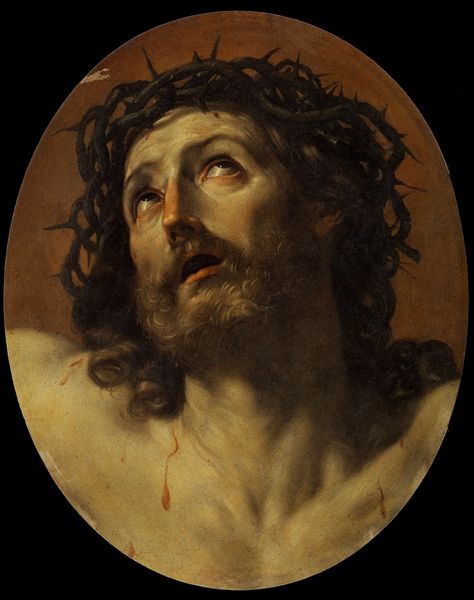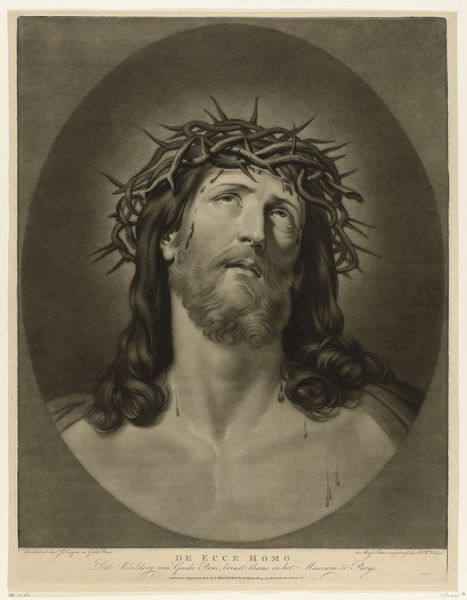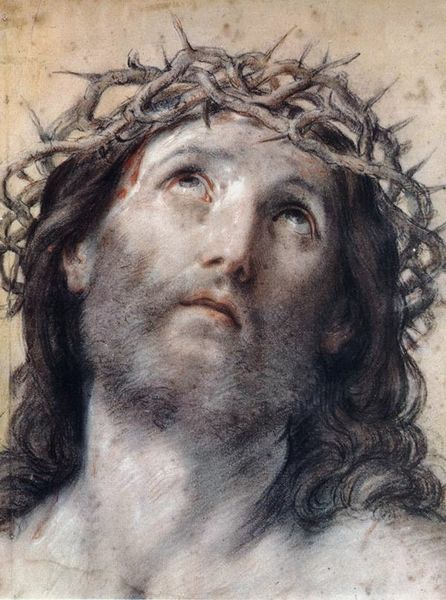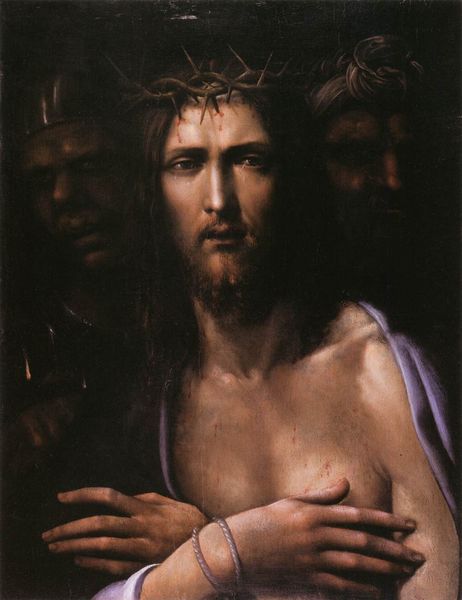
painting, oil-paint
#
portrait
#
baroque
#
painting
#
oil-paint
#
chiaroscuro
#
history-painting
Copyright: Public Domain: Artvee
Curator: Looking at this painting by Guido Reni from the early 1630s, "Head of Christ Crowned with Thorns," I'm immediately struck by its raw emotional power. Editor: Yes, the feeling just hits you, doesn’t it? It’s interesting how the oval format really focuses your gaze on Christ's face. There's such a depth of sorrow there, even tinged with something like defiance. I almost feel as if I’ve interrupted something deeply personal. Curator: That’s partly Reni's mastery of chiaroscuro – that dramatic play of light and shadow. The stark contrast pulls Christ’s pale skin out against the dark background, emphasizing his suffering but also almost… glorifying it. And that crown. Brutal. Editor: It’s unsettling how theatrical yet incredibly human it feels. There's blood, sure, but it's rendered so beautifully that it almost transcends the gore. Think about how artworks such as these function in public devotion and private worship. Who gets to look at such suffering? Who doesn't? Who profits from the viewing of the pain? Curator: Precisely. Reni had a knack for capturing both physical agony and a sort of ethereal grace. This was painted in a period, let’s not forget, dominated by religious fervor and also, crucially, by papal power and its anxieties. You know, I also detect in Christ's upward gaze, something about faith under duress—the endurance of inner strength. Editor: You're right to notice the formal qualities, the careful composition. What this portrait reveals about our complex relationship with suffering—it is, isn’t it, more about the cultural history that shapes art than the blood itself, but that very shaping demands our close attention and critical thought. The picture is indeed staged. Curator: Looking at it again now, I still come back to the power and fragility that Reni manages to evoke with such restraint. Amazing. Editor: An enduring piece indeed; thank you for drawing attention to some of its details and impact, too. It prompts some uncomfortable questions and is all the more worthwhile for it.
Comments
No comments
Be the first to comment and join the conversation on the ultimate creative platform.













